Amy Sue Nathan's Blog: Women's Fiction Writers, page 19
March 3, 2016
Welcome to the new and improved WFW!
Welcome to the brand new blog! Same interviews, same guest posts, same women’s fiction focus, but a lot of new and improved stuff to come, including giveaways through March to celebrate our 5-year anniversary! Watch your inbox! Check back!
Amy xo
March 2, 2016
Guest Post: Man Oh Man! How Author Marin Thomas Created A Setting For Her Novel
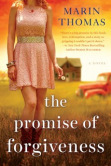 I was fortunate to read an early copy of The Promise of Forgiveness by Marin Thomas. It’s full of heart, family, and the promise of second chances. It’s her first work of women’s fiction but not her first book. Not by a long shot! Marin has written (sit down now) over 35 romances. When she approached something new, she wanted a special setting. She wanted it to be different from what readers were accustomed to—and different from what her characters expected as well.
I was fortunate to read an early copy of The Promise of Forgiveness by Marin Thomas. It’s full of heart, family, and the promise of second chances. It’s her first work of women’s fiction but not her first book. Not by a long shot! Marin has written (sit down now) over 35 romances. When she approached something new, she wanted a special setting. She wanted it to be different from what readers were accustomed to—and different from what her characters expected as well.
Only an author as skilled as Marin could make a dusty, rough, Oklahoma town full of bristly men a charming place to set a novel!
Today, Marin shares with us how she created Unforgiven, Oklahoma, as well as advice on writing setting that really hit home for me.
Please welcome Marin to WFW!
Amy xo
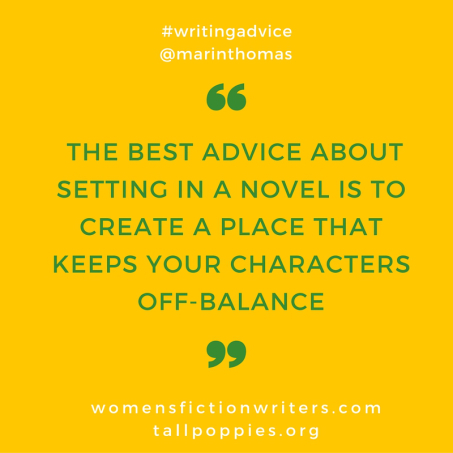
A Novel Setting: Turning Reality Into Fiction
Guy Town; Austin, Texas
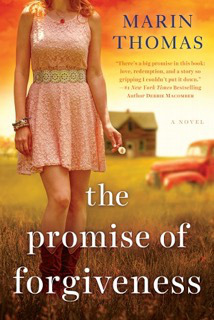 I love picking a story’s location almost as much as I enjoy fleshing out the characters. More often than not I have to write the entire novel before I get a feel for the setting. With The Promise of Forgiveness the setting fell into place faster than the characters and I believe it’s because the concept for the town of Unforgiven, Oklahoma, had been fermenting in my brain for a long time.
I love picking a story’s location almost as much as I enjoy fleshing out the characters. More often than not I have to write the entire novel before I get a feel for the setting. With The Promise of Forgiveness the setting fell into place faster than the characters and I believe it’s because the concept for the town of Unforgiven, Oklahoma, had been fermenting in my brain for a long time.
I’ve always been fascinated with U.S. history and I enjoy researching the old west. My love of history is one reason I jump at the chance to take a ghost tour when I visit new cities or towns. You never know what nugget of information, name or background of a famous person might inspire an idea for a future story.
In The Promise of Forgiveness the fictitious town of Unforgiven, Oklahoma, came into being in a roundabout way. A few years ago when my husband and I were in Tombstone, Arizona, visiting the famous haunted Bird Cage Saloon, another tourist mentioned that he had taken several ghost tours throughout the state of Texas. He went on to tell us a story about a once famous historical neighborhood in Austin called Guy Town. Weeks later the name Guy Town popped into my head again (when you’re over fifty, things pop in and out of your head at an alarming rate). I Googled Guy Town, 1870-1913, and spent hours reading everything I could find, knowing that one day I’d work Guy Town or the idea of it into one of my stories.
In a nutshell,Guy Town, also known as the First Ward, was a saloon district, comprising eight square blocks in Austin. It was the go-to place for women, whiskey, music and gambling. The boundaries of the neighborhood consisted of Congress Avenue to the east, the Colorado River to the south, Guadalupe Street to the west and 4th Street to the north. Today high-rise office buildings and apartments occupy the area, but its history will never be forgotten.
The saloons in Guy Town were typical of those found in any city of similar size in the West during the mid-to-late 1800’s. The one thing that made Guy Town stand out was that it not only catered to reprobates but also to influential clientele due to The Texas State Capitol located right there in the city. In Guy Town state legislators and other government officials sat side-by-side with common folk drinking, gambling, and dancing with the soiled doves.
For a while Guy Town was just another rowdy red-light district in Texas like Houston’s Hollow, El Paso’s Utah Street, Fort Worth’s Hells Half Acre, Waco’s Two Street, and Frogtown in Dallas, where crime and murders were commonplace. Then between 1884 and 1886 a serial killer, known as the “Servant Girl Annihilator,” terrorized the streets of Austin and Guy Town, supposedly murdering eight victims with an axe. The killer was never found.
On July 15, 2014, the PBS TV show History Detective used historical research and modern techniques like psychological and geographic profiling, to help identify a probable suspect: Nathan Elgin, a 19-year-old African-American cook. Elgin worked near the original crime scenes and had a clubfoot, which was similar to a footprint left by the killer. In February 1886, shortly after the last murder, police shot and killed Elgin when he was caught attempting to assault a girl with a knife. Guy Town was shut down in 1913 after a growing sentiment among religious leaders and women’s groups against prostitution, gambling and alcohol abuse.
There wasn’t a need for a serial killer in my women’s fiction, but the name Guy Town stuck with me. When I came up with the idea for The Promise of Forgiveness, I knew I wanted to create a place that catered to men and challenged the novel’s theme of forgiveness, so I filled the town with oil roughnecks and ranchers—the kind of men who would have visited Guy Town back in the day. Ruby, the heroine in my book, has a deep mistrust of men, therefore I made sure Unforgiven was a place where women weren’t welcome. Often it is only when people are uncomfortable that they acknowledge the need to change.
Unforgiven is a safe haven for men. A place where roughnecks and cowboys check their morals and values at the door. The men have secrets and regrets. Their lives have been built on mistakes and bad decisions. At home the men answer to their wives or girlfriends but just like in Guy Town, there is no one in Unforgiven to hold them accountable for their actions or words.
Ruby is nothing like the wives and girlfriends who are at home waiting for their roughnecks and cowboys. She is as hard as the gemstone she’s named after. She, too, has secrets and has made her share of mistakes and bad judgment calls. The town is a reflection of Ruby—unforgiving and suspicious.
The best advice I can give about setting in a novel is to create a place that keeps your characters off-balance. If you give the setting it’s own voice and viewpoint, it can help guide you in creating richer, more meaningful characters.
What’s the most unusual setting you’ve read in a book?
Marin Thomas writes Women’s Fiction for Berkley/NAL and western romance for Harlequin books. To date she has contracted over 35 projects for Harlequin. The Promise of Forgiveness (March 2016) is her first work of women’s fiction.
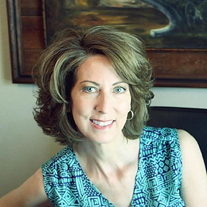 Marin grew up in Janesville, Wisconsin, and attended college at the University of Arizona where she played basketball for the Lady Wildcats and earned a B.A. in Radio-TV. Following graduation she married her college sweetheart in a five-minute ceremony at the historical Little Chapel of the West in Las Vegas, Nevada. Marin and her husband are recent empty nesters and currently live in Houston, Texas, where she spends her free time junk hunting and researching her next ghost tour.
Marin grew up in Janesville, Wisconsin, and attended college at the University of Arizona where she played basketball for the Lady Wildcats and earned a B.A. in Radio-TV. Following graduation she married her college sweetheart in a five-minute ceremony at the historical Little Chapel of the West in Las Vegas, Nevada. Marin and her husband are recent empty nesters and currently live in Houston, Texas, where she spends her free time junk hunting and researching her next ghost tour.
Buy the book! http://bit.ly/BuyPromise
Website www.marinthomas.com
FB https://www.facebook.com/AuthorMarinThomas/?ref=ts
Twitter https://twitter.com/marinthomas
Goodreads https://www.goodreads.com/author/show/323927.Marin_Thomas
Instagram https://www.instagram.com/marinthomasauthor/
Pinterest https://www.pinterest.com/MarinAuthor/
Want to learn more about Guy Town?
http://bob-texashillcountry.blogspot.com/2011/02/few-things-about-old-west-you-may-not.html








February 29, 2016
The Girl In The Title
I’m not much of a bandwagon jumper. Unless you’re talking eyebrows and I’ve definitely jumped on the eyebrow bandwagon. Did you know eyebrows are the must-have new fashion accessory? Physical features we have always had! Those are the new black!
This is not a beauty blog, I know.
Still…
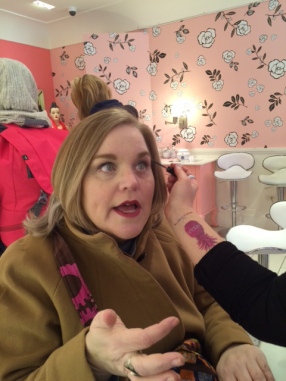
Yes. I talk with my hands even when someone holds a pointy wand near my eye. I’m a thrill-seeker. (And a comedian.)
This morning I was thinking about book titles and the Girl In The Title trend. I thought perhaps this was a bandwagon worth jumping on. There’s something catchy (and bestselling) about these books. There’s something universal and intriguing and beguiling.
I could surely dream up a Girl Title for my next book, due April 1 to my editor. Wouldn’t that be exciting?
So I made a list for new book and the way I could use Girl in the title. Currently, the working title for novel is Left To Chance (which I love and has multiple meanings, but let’s set good sense aside for a moment).
The Chance Girl
The Cemetery Girl
Last Chance Girl
New Chance Girl
The Girls of Chance
Now I bet you’re wondering if this is a novel about gambling, grave-diggers, or prostitutes.
I’ll never tell. (Well, I will, just not quite yet.)
As I was typing out the titles in my Titles note on my phone (yes, this is a running list) hat’s all I could come up with for GIRL. In my list-making, let’s-nail-this-thing frenzy, I cringed.
I strongly dislike the word GIRL.
Nothing against the titles where it fits and works beautifully, of course. Maybe if it made sense in some way, I could put my feelings aside. Publishers have the final say on titles anyway, so I could be eating my words at some point in my career. Nom Nom Nom. They will be delicious.
But, in general, in real life, when the word GIRL is referring to an adult woman, I grimace. I cringe. I contemplate some finger wagging. And I’ve felt this way for longer than Girl In The Title has been a trend. I know plenty of people who fling that word around. I know the term is often meant affectionately, casually, offhandedly, and with no malice. I know the term “mean girl” often refers to a bully no matter the age. But in general, the word just plain bugs me.
“Oh, she’s a nice girl.”
“She’s a pretty girl.”
“She’s a smart girl.”
“She’s a brave girl.”
“She’s a funny girl.”
What they really mean is WOMAN. Young woman perhaps, but not a girl. GIRLS are twelve. I wouldn’t even refer to my twenty-year-old daughter as a girl.
The main character in my next novel, Teddi Lerner, is FORTY-TWO. Teddi Lerner is not a girl.
Scratch Girl Title Goal.
Am I jealous? Am I a bitch? Am I just looking for something to complain about on a Monday morning?
No, sometimes, not at the moment.
I gauged my green meter and this isn’t Envy writing this blog post today. I’m not saying my books would have topped the charts with Girl titles or that books are popular because of Girl titles. There’s an article floating around on the internet somewhere as to why Girl titles work. I don’t doubt it.
It’s okay that the title trend is beyond the reach of my new novel and inconsistent with my own sensibilities. Trend chasers take heed! There are other title trends I do like. I like the long, wordy title trend. I like the one-word title trend. I also like the trend my own novels have set (intentionally). The Glass Wives. The Good Neighbor. The ________ ___________ for novel three?
Perhaps.
Even if Left To Chance is a perfectly appropriate and good title that fits the book and has hidden meaning, I’m sure I’ll chase each of these title trends (and those yet to be recognized) around the block a few times before deciding.
Because I’m a crazy woman.
Have a title for my new novel? Have a Girl Title you love? Do you trend chase at all? How are YOUR eyebrows today?








February 21, 2016
Guest Post: Author Kelly Simmons Talks About the Perils Of Omniscient POV
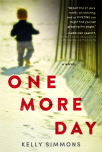 I’m so happy to have Kelly Simmons here today. Not only have I known Kelly for about 8 years, she is tackling a topic close to my heart.
I’m so happy to have Kelly Simmons here today. Not only have I known Kelly for about 8 years, she is tackling a topic close to my heart.
THIRD PERSON OMNISCIENT POINT OF VIEW.
Chill, we’re not saying it can’t or shouldn’t be done except, well, it shouldn’t. Not by most writers. Sometimes it’s effective to have an all-knowing narrator perched on the mantel, but it also has tremendous limitations. And as only Kelly can, she’s going to demonstrate and explain.
When you’re finished being brainwashed reading, check out Kelly’s newest novel, ONE MORE DAY. Details below!
Please welcome Kelly Simmons to WFW and let’s talk omniscient POV in the comments!
Amy xo

The Peril of Third-Person Omniscient Point Of View
by Kelly Simmons
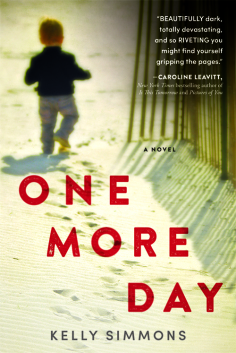 Kelly Simmons is not fond of third person omniscient. It reminds her of cold, mushy peas force-fed to her by a mother whose only defense was that her own mother did the same , and if it was good enough for her, Maggie O’Callahan, then it was certainly good enough for young Kelly. Why, the only one happy about third person in their household was the dog, Fluffy, who eagerly lapped up the peas offered under the table.
Kelly Simmons is not fond of third person omniscient. It reminds her of cold, mushy peas force-fed to her by a mother whose only defense was that her own mother did the same , and if it was good enough for her, Maggie O’Callahan, then it was certainly good enough for young Kelly. Why, the only one happy about third person in their household was the dog, Fluffy, who eagerly lapped up the peas offered under the table.
Okay, you see what I did there. It doesn’t seem fair to write about the perils of third person in first person, but I feel strongly that third person should come with a warning label. Caution: may feel like cold mushy peas!!
Here’s what happens. Sometimes we are deeply inspired by sagas that span generations and countries. We fall in love with multi-book series that build worlds, require deep historical research and introduce us to hundreds of characters. And as writers, we want this sweep too – and choose third person omniscient.
And by embracing it — there is no way to narrow our scope. We have only breadth ahead — of characters, settings, timelines, and point of view. Goals spiral, outlines mushroom . . . and it becomes impossible to write a summary for an agent, an editor, or even a well-meaning friend over coffee. That’s how you know you are in trouble.
And yet – no one was ever harmed by writing the first pages of a novel two or three different ways.
If you’re just starting out – if you have all the research done and the outline complete and your office is starting to look like a paper-covered cave . . . If, when you try to describe your novel to friends their eyes start to glaze over and they need to take bathroom breaks…
Consider trying third person limited. Consider first person chapters from alternating points of view.
“Experiment early to avoid tears later,” Kelly said, the tracks of her own tears clearly visible on her face. No one knew she’d written eight novels before she’d published one, and had so many abandoned manuscripts she had to buy a separate hard drive to hold them all. Her husband knew, however, and made it his business to never let her forget . . . . .
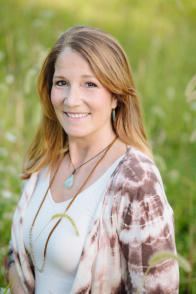 Kelly Simmons’ novels have been hailed as electrifying, complex and poignant, and aren’t those nice words? Her third novel, ONE MORE DAY, just came out and everyone calls it riveting, so don’t buy it unless you want to stay up all night reading it. It’s also perilously crafted in third person. She’s a member of The Liars Club, a group of published novelists dedicated to helping fledgling writers. Connect with her here:
Kelly Simmons’ novels have been hailed as electrifying, complex and poignant, and aren’t those nice words? Her third novel, ONE MORE DAY, just came out and everyone calls it riveting, so don’t buy it unless you want to stay up all night reading it. It’s also perilously crafted in third person. She’s a member of The Liars Club, a group of published novelists dedicated to helping fledgling writers. Connect with her here:
http://www.kellysimmonsbooks.com/
https://www.facebook.com/Fans-of-Author-Kelly-Simmons-291343839243/
https://twitter.com/kellysimmons
https://www.instagram.com/kellyasimmons/








February 17, 2016
Guest Post: Author Yona Zeldis McDonough Talks About Choosing A Setting For Her Novel
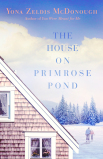
You know what they say about real estate, right? Location! Location! Location! Well, I think the same can be true for novels. Where we choose to set our novels is important but we each come to this decision in a different way. Today, multi-published author, my friend, Yona Zeldis McDonough, give us her thoughts on a sense of place for fiction, and how she chose the setting for her new novel, The House On Primrose Pond. I
I was lucky to read an early copy of The House On Primrose Pond and was immediately swept away—first to Brooklyn and then to New Hampshire, in the present and in the past. Yona’s writing is vivid, her characters realistic, with relationships I could relate to — she wrote people I wanted to know. For me, that’s quite often the mark of a good read.
Please welcome Yona to WFW, and tell us about the setting of your book in the comments!
Amy xo

A Sense of Place
by Yona Zeldis McDonough
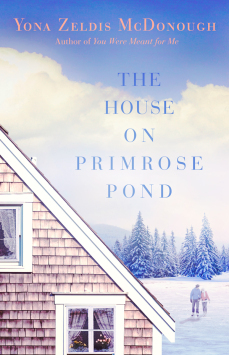 I’ve set my six prior novels in and around New York City. This was less an active decision on my part, and more of a default position. In my view, the setting in a novel can function almost as a “character,” and to make that “character” come alive, you have to know it well—the sights, sounds and smells of a place, the nuances of the neighborhoods, the landmarks and the hidden spots that are off-the-beaten track. I was raised in New York and, with the exception of my four years in college and a year of European travel way back in the 1970s, I have lived here for all of my life. So writing with a New York setting came effortlessly to me. I did not have to dig for the material; it was all there, ready and waiting. I just had to reach for it.
I’ve set my six prior novels in and around New York City. This was less an active decision on my part, and more of a default position. In my view, the setting in a novel can function almost as a “character,” and to make that “character” come alive, you have to know it well—the sights, sounds and smells of a place, the nuances of the neighborhoods, the landmarks and the hidden spots that are off-the-beaten track. I was raised in New York and, with the exception of my four years in college and a year of European travel way back in the 1970s, I have lived here for all of my life. So writing with a New York setting came effortlessly to me. I did not have to dig for the material; it was all there, ready and waiting. I just had to reach for it.
When I began thinking about my next novel though, I found myself chafing at that very ease and wanted to push my own boundaries. I decided to set a novel somewhere else. But where? That was the all-important question. The answer came pretty quickly. I turned to New Hampshire, because it’s a state I have come to know and love. My husband is from Portsmouth, NH and we have spent time there during the course of our marriage. And for many years, we rented a cottage in an enchanted, lakeside spot that for me is heaven on earth.
It was that lake and that house that I chose for the setting of The House on Primrose Pond. I knew the place intimately, and so I could write about it with confidence and passion. I wanted to make it come alive to the reader, and in order for that to happen, it had to be fully, gloriously alive to me. I had experienced the cottage in drenching rain, brilliant sunlight and even in snow and ice, since one winter we went up to celebrate my father-in-law’s 90th birthday. I knew my stuff, and I was ready.
I had my characters in place—a recently widowed mom in her late thirties who moves, with some reluctance, from Brooklyn to a lake house in New Hampshire. Her husband has been killed in a bicycle accident, and her life’s been upended. She does not want to leave her New York home, and teen-aged kids don’t want to leave either, and so she has to contend with their resistance. But there are all sorts of practical reasons to make the move and so she does. The other central character is a woman in her seventies, also widowed, who is her neighbor. At first it seems like this woman—cultivated, worldly—might become a friend, but when she seems to turning my protagonist’s daughter against her, all bets are off.
Yet this story line and conflict between characters did not feel like enough to me. So I turned back to New Hampshire—the “place” that I wanted to function almost as a character—for inspiration. After some research, I came upon the story of Ruth Blay, who, in 1768, was the last woman hanged in the state. Blay, an unmarried seamstress and teacher in her early thirties, was accused of murdering her newborn daughter. A five-year-old named Betsey Pettingill had found the dead baby while playing in a barn on a hot day in June. The particulars of what happened next are not recorded, but it is known that the bailiff was called, Ruth was taken to a jail in Portsmouth, NH, and she was ultimately convicted of concealing the birth of an illegitimate child—a “crime” for which she paid with her life.
As soon as I read this, I knew I had to incorporate it into the novel. Now the sense of place had expanded, to include historical events. In addition to making the present day New Hampshire come alive, I had to evoke the New Hampshire of the seventeenth and eighteenth centuries. This involved research of the kind I love best: poring over photographs and books, and making museum visits to see the dwellings and objects particular to the time. In the Portsmouth Historical Society I was able to see a dark blue petticoat, possibly made by Blay herself. Other collections yielded silver, furniture, samplers (I mention one in the novel) and paintings. All these things helped me imagine the place as it was centuries ago. Along with my intrepid sister-in-law, I also made a trip to South Cemetery in Portsmouth, where we were able to find the spot where Ruth had drawn her last breath. There was no tombstone; though she had been buried there, nothing was erected to mark the spot.
It is my belief—or at least my ardent hope—that the weaving of this material into the story deepens not only the sense of place, but also gives fuller life to the characters that inhabit it.
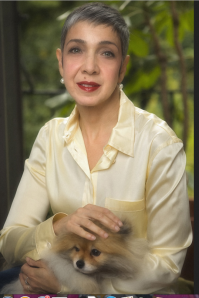 Yona Zeldis McDonough’s novel The House on Primrose Pond came out from New American Library on Feb. 2, 2016. Visit her at: http://www.yonazeldismcdonough.com
Yona Zeldis McDonough’s novel The House on Primrose Pond came out from New American Library on Feb. 2, 2016. Visit her at: http://www.yonazeldismcdonough.com
https://www.facebook.com/yzmcdonough








Guest Post: Author Yona McDonough Talks About Choosing A Setting For Her Novel
 You know what they say about real estate, right? Location! Location! Location! Well, I think the same can be true for novels. Where we choose to set our novels is important but we each come to this decision in a different way. Today, multi-published author, my friend, Yona McDonough, give us her thoughts on a sense of place for fiction, and how she chose the setting for her new novel, The House On Primrose Pond. I
You know what they say about real estate, right? Location! Location! Location! Well, I think the same can be true for novels. Where we choose to set our novels is important but we each come to this decision in a different way. Today, multi-published author, my friend, Yona McDonough, give us her thoughts on a sense of place for fiction, and how she chose the setting for her new novel, The House On Primrose Pond. I
I was lucky to read an early copy of The House On Primrose Pond and was immediately swept away—first to Brooklyn and then to New Hampshire, in the present and in the past. Yona’s writing is vivid, her characters realistic, with relationships I could relate to — she wrote people I wanted to know. For me, that’s quite often the mark of a good read.
Please welcome Yona to WFW, and tell us about the setting of your book in the comments!
Amy xo
A Sense of Place
by Yona McDonough
 I’ve set my six prior novels in and around New York City. This was less an active decision on my part, and more of a default position. In my view, the setting in a novel can function almost as a “character,” and to make that “character” come alive, you have to know it well—the sights, sounds and smells of a place, the nuances of the neighborhoods, the landmarks and the hidden spots that are off-the-beaten track. I was raised in New York and, with the exception of my four years in college and a year of European travel way back in the 1970s, I have lived here for all of my life. So writing with a New York setting came effortlessly to me. I did not have to dig for the material; it was all there, ready and waiting. I just had to reach for it.
I’ve set my six prior novels in and around New York City. This was less an active decision on my part, and more of a default position. In my view, the setting in a novel can function almost as a “character,” and to make that “character” come alive, you have to know it well—the sights, sounds and smells of a place, the nuances of the neighborhoods, the landmarks and the hidden spots that are off-the-beaten track. I was raised in New York and, with the exception of my four years in college and a year of European travel way back in the 1970s, I have lived here for all of my life. So writing with a New York setting came effortlessly to me. I did not have to dig for the material; it was all there, ready and waiting. I just had to reach for it.
When I began thinking about my next novel though, I found myself chafing at that very ease and wanted to push my own boundaries. I decided to set a novel somewhere else. But where? That was the all-important question. The answer came pretty quickly. I turned to New Hampshire, because it’s a state I have come to know and love. My husband is from Portsmouth, NH and we have spent time there during the course of our marriage. And for many years, we rented a cottage in an enchanted, lakeside spot that for me is heaven on earth.
It was that lake and that house that I chose for the setting of The House on Primrose Pond. I knew the place intimately, and so I could write about it with confidence and passion. I wanted to make it come alive to the reader, and in order for that to happen, it had to be fully, gloriously alive to me. I had experienced the cottage in drenching rain, brilliant sunlight and even in snow and ice, since one winter we went up to celebrate my father-in-law’s 90th birthday. I knew my stuff, and I was ready.
I had my characters in place—a recently widowed mom in her late thirties who moves, with some reluctance, from Brooklyn to a lake house in New Hampshire. Her husband has been killed in a bicycle accident, and her life’s been upended. She does not want to leave her New York home, and teen-aged kids don’t want to leave either, and so she has to contend with their resistance. But there are all sorts of practical reasons to make the move and so she does. The other central character is a woman in her seventies, also widowed, who is her neighbor. At first it seems like this woman—cultivated, worldly—might become a friend, but when she seems to turning my protagonist’s daughter against her, all bets are off.
Yet this story line and conflict between characters did not feel like enough to me. So I turned back to New Hampshire—the “place” that I wanted to function almost as a character—for inspiration. After some research, I came upon the story of Ruth Blay, who, in 1768, was the last woman hanged in the state. Blay, an unmarried seamstress and teacher in her early thirties, was accused of murdering her newborn daughter. A five-year-old named Betsey Pettingill had found the dead baby while playing in a barn on a hot day in June. The particulars of what happened next are not recorded, but it is known that the bailiff was called, Ruth was taken to a jail in Portsmouth, NH, and she was ultimately convicted of concealing the birth of an illegitimate child—a “crime” for which she paid with her life.
As soon as I read this, I knew I had to incorporate it into the novel. Now the sense of place had expanded, to include historical events. In addition to making the present day New Hampshire come alive, I had to evoke the New Hampshire of the seventeenth and eighteenth centuries. This involved research of the kind I love best: poring over photographs and books, and making museum visits to see the dwellings and objects particular to the time. In the Portsmouth Historical Society I was able to see a dark blue petticoat, possibly made by Blay herself. Other collections yielded silver, furniture, samplers (I mention one in the novel) and paintings. All these things helped me imagine the place as it was centuries ago. Along with my intrepid sister-in-law, I also made a trip to South Cemetery in Portsmouth, where we were able to find the spot where Ruth had drawn her last breath. There was no tombstone; though she had been buried there, nothing was erected to mark the spot.
It is my belief—or at least my ardent hope—that the weaving of this material into the story deepens not only the sense of place, but also gives fuller life to the characters that inhabit it.
 Yona Zeldis McDonough’s novel The House on Primrose Pond came out from New American Library on Feb. 2, 2016. Visit her at: http://www.yonazeldismcdonough.com
Yona Zeldis McDonough’s novel The House on Primrose Pond came out from New American Library on Feb. 2, 2016. Visit her at: http://www.yonazeldismcdonough.com
https://www.facebook.com/yzmcdonough








February 4, 2016
Guest Post: Facing Fears In Writing And In Life by Author Julie Christine Johnson
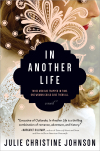 What fears do you share with the characters in your novel? What fears or phobias do you give her that are not part of your life but that you want to explore? Today, debut novelist, Julie Christine Johnson shares with us a real life fear that worked its way into her novel, and how she — and her main character — have triumphed.
What fears do you share with the characters in your novel? What fears or phobias do you give her that are not part of your life but that you want to explore? Today, debut novelist, Julie Christine Johnson shares with us a real life fear that worked its way into her novel, and how she — and her main character — have triumphed.
Share your story in the comments and please welcome Julie to WFW!
Amy xo
Facing Fears In Writing And In Life
by Julie Christine Johnson
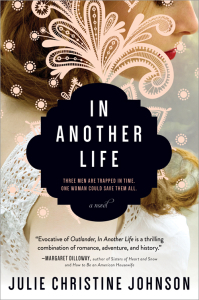 Late May 1999. Inside a prop plane on the tarmac of a Midwest regional airport. We’re not moving. The roaring engines prevent conversation, but fifteen other passengers and I shift in our seats, glance at our watches. The door is sealed tight and the air in the steel tube is thick and hot.
Late May 1999. Inside a prop plane on the tarmac of a Midwest regional airport. We’re not moving. The roaring engines prevent conversation, but fifteen other passengers and I shift in our seats, glance at our watches. The door is sealed tight and the air in the steel tube is thick and hot.
Skin flushes fingers go numb chest constricts stomach collapses. A battery acid wave of panic cascades through me. My every thought is a scream: Get me off this plane. Open the doors. I have to get out. But I remain silent, biting the inside of my lip until I taste blood. Seconds before I race for the exit to keep my head from spinning off my neck, the plane moves forward.
Somehow I get home, and when I do, I cancel a trip to Europe. Problem is, traveling is my job. I’m Associate Director of Study Abroad Programs at a Big Ten University. And I’m not sure I can ever get on an airplane again.
I’ve been claustrophobic as far back as I can recall, which would be to the early 70s and a straw bale maze I clawed my way through, screaming, until I found an exit. I’ve walked up twenty flights of stairs to avoid an elevator. But until May 1999, I’d never had trouble flying. I’d been around the world, studying, teaching, working.
I didn’t set out to saddle Lia, the protagonist in my debut novel In Another Life, with my phobia, but when I trapped her in a corridor of an ancient cathedral, I felt panic rising within me and I poured it into her. Finding a sister claustrophobic in my character became a way to stand outside my own anxiety and watch someone else survive, and even find redemption through, my greatest nightmare.
As readers, fiction often allows us to explore the most unimaginable of our fears and feel relief that someone is able to articulate what we cannot, what we dare not. As writers, we are challenged to offer readers a sense of empathy for our characters, even if they don’t always agree with the choices those characters make along the way. Creating believable vulnerabilities that aren’t dependent upon plot, but which are the very essence of a character herself, invites readers beneath her skin, into her very soul.
My stories often take me into emotional spaces I never intended to go. As I write my way through, I’m able to imbue my characters with strengths I don’t possess or burden them with faults I’m glad I don’t have to claim. I am not my characters, but each possesses a thread of my spirit.
In the months that followed the panic on the tarmac, I got my wings back. I was given a prescription for Ativan to take before boarding a plane. I found behavioral coping mechanisms: meditation, crossword puzzles, coloring books. But never was there a flight without some episode of claustrophobic panic that made me wonder if this was it, this was when I’d finally lose my mind.
Last summer, I spent a blissful three weeks in the southwest of Ireland, attending a poetry workshop and doing some follow-up research and writing on my second novel (The Crows of Beara: Ashland Creek Press, September 2017). The trip home was the first in sixteen years that I felt not the slightest twinge of claustrophobia. I don’t know what changed, what made this trip different; I was just happy that for once, my demons remained silent. My Ativan remained unopened in my carry on. I worked on a crossword puzzle and then, somewhere over the North Atlantic, I fell asleep.
“Every secret of a writer’s soul, every experience of his life, every quality of his mind, is written large in his works.” —Virginia Woolf
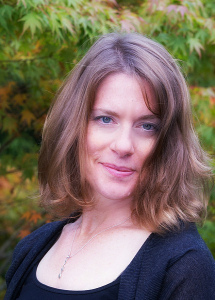 Julie Christine Johnson is the author of the novels In Another Life (February 2016, Sourcebooks Landmark) and The Crows of Beara (September 2017, Ashland Creek Press). Her short stories and essays have appeared in several journals, includingEmerge Literary Journal, Mud Season Review; Cirque: A Literary Journal of the North Pacific Rim; Cobalt, the anthologiesStories for Sendai; Up, Do: Flash Fiction by Women Writers; Three Minus One: Stories of Love and Loss and featured on the flash fiction podcast, No Extra Words. She holds undergraduate degrees in French and Psychology and a Master’s in International Affairs.
Julie Christine Johnson is the author of the novels In Another Life (February 2016, Sourcebooks Landmark) and The Crows of Beara (September 2017, Ashland Creek Press). Her short stories and essays have appeared in several journals, includingEmerge Literary Journal, Mud Season Review; Cirque: A Literary Journal of the North Pacific Rim; Cobalt, the anthologiesStories for Sendai; Up, Do: Flash Fiction by Women Writers; Three Minus One: Stories of Love and Loss and featured on the flash fiction podcast, No Extra Words. She holds undergraduate degrees in French and Psychology and a Master’s in International Affairs.
A runner, hiker, and wine geek, Julie makes her home on the Olympic Peninsula of northwest Washington state with her husband. In Another Life is her first novel.
www.juliechristinejohnson.com
Author Facebook








January 28, 2016
Guest Post: Persistence On The Road To Publication by Author Phoebe Fox
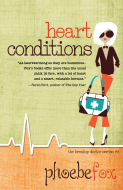 Nothing fills my writer’s soul than hearing other author’s road to publication. Or their road to not being published yet. It reminds me that while writing is something we do on our own, our experiences are shared. One for all and all for one.
Nothing fills my writer’s soul than hearing other author’s road to publication. Or their road to not being published yet. It reminds me that while writing is something we do on our own, our experiences are shared. One for all and all for one.
Today, Phoebe Fox shares her journey to publication with us. She uses words like REJECTION and PERSISTENCE. Words every writer can relate to.
Please welcome Phoebe to WFW and share your own stories of persistence in the comments!
Amy xo
Persistence On The Road To Publication
by Phoebe Fox
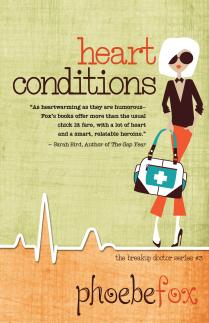 Long before I was published or even had an agent, a dear friend of mine, multi-published, ridiculously talented author Sarah Bird, revealed this authorial secret to me: that only one thing separated her from all her unpublished writer friends.
Long before I was published or even had an agent, a dear friend of mine, multi-published, ridiculously talented author Sarah Bird, revealed this authorial secret to me: that only one thing separated her from all her unpublished writer friends.
Persistence.
Being the type A overachiever that I am, I greeted this news with delight. “That’s it? Persistence? Shuh, I can do that all day long.” I used to be an actor, for god’s sake; I knew all about handling rejection.
When my first manuscript made the agent submission rounds to a resounding lack of interest, I reminded myself that the way to win the game was just to stay in it. Undaunted, I wrote a second story, polished it up, and sent that sucker out.
This time I was rewarded with more action: lots of requests for partials…requests for fulls… And then, invariably, the painfully polite form letters.
I got rejections. Then more. Then dozens and dozens more. On what was literally my hundredth rejection, finally my determination started to falter. “That’s it,” I said to my faithful critique group, to whom I’d been trumpeting my “persistence” theme for years. “I guess I’m putting this one in a drawer too.”
But this is the problem when you tell people about your personal mission statement: They remind you of it. They hold you to it.
One of my writing partners exhorted me to keep going, not to give up—to persist. And because I generally hate to accept defeat (and even more to have my own damn proclamations thrown back in my face), I reluctantly agreed.
I kept submitting–and on query 113 it finally happened: I got the offer. Superagent Courtney Miller-Callihan of the Sanford J. Greenberger Agency was marvelously enthusiastic and encouraging. She loved the story, loved my writing, and wanted to represent me.
I will admit to feeling a certain amount of gleeful vindication here: I was right all along! All I had to do was persist and there was no way I couldn’t succeed.
Courtney submitted my manuscript and I waited excitedly to find out which pub house would snatch it up—or whether, as she hoped, we’d be lucky enough to go straight to auction.
We got amazing feedback. Editors loved the original idea, my “fresh voice,” the clean, tight prose.
We got some of the nicest, most positive rejection letters you’ve ever seen.
And not a single offer.
This was a much harder blow. Like a lot of authors I assumed that getting an agent was the toughest part of the journey, and once you had been thusly anointed the rest of the path to publication was a sure thing. And it was especially painful because the feedback we got from editors told us that we’d been frustratingly close.
But I gritted my teeth, put the story in a drawer (beside the first one…) and grimly started plodding the path again. This time it was harder to start over. But I reminded myself of Sarah’s words. All right, dammit. I’d persist. I finished another manuscript—my third, if you’re keeping count.
But I kept thinking about my near-miss with the last one. That story had merit, I thought, and I’d never been able to get the characters and the storyline out of my mind.
This was right when the digital publishing world pretty much exploded, and I realized that there were other avenues open to me now if I really wanted to usher my stories into print.
I did a heavy revamp of that rejected manuscript and told Courtney that I’d decided to publish the story myself. At which point she whipped out some persistence of her own: “We came awfully close last time,” she told me. “Will you give me one more crack at it first?” (I’m telling you, every author wants a Courtney Miller-Callihan in her corner.)
And so for an unheard-of second time she shopped it around to publishers—more than a year after our first round of submissions.
And this time…we got the offer. That story became my first published novel, as well as the eponymous first title in my Breakup Doctor series, of which I’m now writing the fourth book.
In hindsight it’s easy to see that The Breakup Doctor is a much better book than it was the first go-around. I needed time to “season” it, as well as to season myself as a writer. And in the intervening time Henery Press, which has turned out to be the perfect home for it, had hit the ground running with a roster full of USA Today bestsellers and award winners, and had created an impressive reputation in the business.
To me, my convoluted journey to publication is not unlike the story of The Breakup Doctor itself—something really, really good came out of what at the time felt like nothing but rejection and heartbreak.
But if at any point I’d given up, or accepted defeat—been less persistent—I never would have gotten any of it—an agent, a publisher, a series contract, nothing.
After I signed a multi-book contract I thought the hardest part was done—and then I got to learn all about promotion, marketing, reaching your readers, and embarked on yet another difficult lesson in persistence.
Over and over again I have found persistence to be the most important trait any writer can have, and I’ve never received better advice.
Persist in writing. Persist in querying. Persist in trying to get published, to market your book, to write another book…and another. There are so many people and reasons ready to convince you that you shouldn’t—you have to be the number one voice always reminding yourself that you should.
You must be the person who always believes in you, who never gives up faith.
Keep moving forward.
Persist.

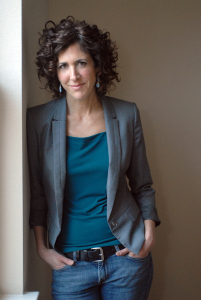
Phoebe Fox is an author, a columnist for major media outlets, and a close observer of relationships in the wild. Her latest in the Breakup Doctor series, Heart Conditions, will be released February 2016. You can find her at www.phoebefoxauthor.com.
www.Facebook.com/phoebefoxauthor
@phoebefoxauthor








January 27, 2016
Free Contest For Unpublished Authors Of Women’s Fiction
I don’t know any more than this — but how could I not pass along this information? Did you know I was a contest fiend before I was published, or that I met my first agent when he chose my novel’s opening as a winner in one of them? When I was on my first round of queries, those contest wins (I didn’t mention the losses) were part of my bio. I don’t know if it helped, but to me, it meant I put myself out there.
Click this link and check it all out. You have until February 9th!
DEAR LUCKY AGENT CONTEST FOR WOMEN’S FICTION
Go for it! And if you do, let me know!
Amy xo








January 16, 2016
Intro & Info: Women’s Fiction Writers Association
 Today I’d like to introduce Amy Impellizzeri, my friend (she drove more than two hours with her three kids to come to my book launch in Philadelphia), and the president of the Women’s Fiction Writers Association (WFWA).
Today I’d like to introduce Amy Impellizzeri, my friend (she drove more than two hours with her three kids to come to my book launch in Philadelphia), and the president of the Women’s Fiction Writers Association (WFWA).
WFWA is an international membership organization, not just a Facebook group (although there is one) or a Twitter feed (there’s one of those too). This is a professional organization that not only offers camaraderie but provides information and education to its members (in addition to an amazing annual retreat), all of whom are writers of women’s fiction, or, are agents, editors, and publishing professionals who work with women’s fiction authors and their books.
The reason I’m featuring WFWA today is because I realized that many writers don’t know about it! Woe is me! Can’t let that be!
Please check out WFWA — there are plenty of links to the organization’s page below. And if you have any questions, just post them in the comments. Or tell us why YOU love WFWA.
Just to clarify (pretend this is the fine print), while I am a member of WFWA, this blog is mine, mine, all mine and not affiliated with the organization. Even as the founder of this blog which is dedicated to women’s fiction and its authors, I am thrilled to be part of (though not in charge of, lol) a professional organization with a complementary mission!
Amy xo
Click to view slideshow.
Interview with Amy Impellizzeri, President, Women’s Fiction Writers Association

womensfictionwriters.org
Amy Sue Nathan: What first drew you to WFWA?
Amy Impellizzeri: Ah, the engagement of the WFWA community is downright infectious. I saw various members of WFWA steering the conversation back to writers of women’s fiction around the online writing world and on social media and on other blogs (including yours!) and I was drawn to the idea of an organization whose members were busy – not just writing – but also supporting other writers of women’s fiction.
Amy Sue Nathan: Before you were a member, did you have any misconceptions about the organization?
Amy Impellizzeri: Well, I’m sure I thought it would be like many other “Facebook” or online communities I had become disenchanted with previously, in that the engagement would be strictly virtual and thus disconnected to a certain extent.
But I couldn’t have been more wrong.
This group is connected and invested in each other. We follow each other’s successes and struggles – personal and professional – and celebrate and empathize with them loudly, as the occasion calls. In September 2015, many of us participated in the first annual WFWA Retreat, and we had to keep reminding each other that it was the first time many of us had actually met in person. This is not your usual “online” community.
Amy Sue Nathan: How does WFWA differ from other writer organizations you know about or are a part of?
Amy Impellizzeri: Honestly, since joining WFWA, I have not really sought out additional writing groups (other than my fierce devotion to my tribe of Tall Poppy Writers!) because WFWA is, to my knowledge, the most vibrant and inclusive community of working writers of women’s fiction supporting other working writers of women’s fiction. You will see no shortage of inspirational memes sprouting out from our corners, but we are also sharing very practical information.
Want to know how to incorporate song lyrics into your novel without breaking the bank? Want to see an actual successful query letter to an agent who is accepting women’s fiction submissions right now? Want to know who loves their editor/publisher/publicist, and who, well … doesn’t? Want someone to hold you to your word count goals this month?
We’re your people.
Amy Sue Nathan: Can you share with us some upcoming members-only workshops for 2016?
Amy Impellizzeri: I am over the moon to announce that literary agent extraordinaire, Don Maass, will kick off the amazing programming we have scheduled this year, presenting a workshop this March called “Five Kinds of Shiny.” Don Maass will be hosting a two week, hands-on workshop focusing on creating a manuscript that not only catches the eyes of agents and editors, but holds them all the way through. This is the workshop that will answer questions including: “What signals “commercial” to industry types?” and “How can you give your project that radiance without compromising its integrity?”
After March, we will continue to hold workshops at least quarterly, including an upcoming workshop that is near and dear to my heart as I take the proverbial red pen to my own current work-in-progress. We will have a special multi-presenter August workshop entitled “Killing our Darlings.” This will provide a practical approach to editing that means all the difference in preparing a commercial manuscript.
I’m also excited to confirm that we are finalizing the details of our annual Pitch session with agents who are looking to grow their women’s fiction catalogue. WFWA is so lucky to have the support of many amazing women’s fiction agents who generously share their insight and dig into participants’ manuscripts with concrete, constructive feedback. I can tell you from personal experience that it is quite impressive to tell potential agents and editors that the work you’ve put into your manuscripts includes personal workshop feedback from top agents in the industry.
Amy Sue Nathan: What’s going to be new with WFWA this coming year?
Amy Impellizzeri: Many might not know that for the last three years, the Founding members worked tirelessly around the clock, seeding the organization with personal resources, in order to create the current infrastructure of the WFWA, including an army of volunteers and a website migration that took place just before handing off the leadership to the current Board.
The new Board is focused on taking all that hard work to the next level and working with this amazing infrastructure to elevate the visibility of WFWA in the industry, and to be the ambassadors for voices of women’s fiction in the market today. In the on-going effort to add to the robustness of the conversation in the community, we want to add more agents, developmental editors, and even small press editors to the membership rolls. My own award-winning publisher, Nancy Cleary of Wyatt-MacKenzie, just joined this month, and I couldn’t be more thrilled!
Amy Sue Nathan: Tell us a little about the contests!
Amy Impellizzeri: Brand new to WFWA this year is the Shining Star contest, a contest for published authors of women’s fiction. Registration is open through January 31, and each submission will be judged by three readers of Women’s Fiction, and then Final Round submissions will be judged by librarians. There will be two winners announced at the Annual Retreat next fall: including one Debut author.
And of course, unpublished authors will have the chance to enter our annual Rising Star contest when it opens this May. Submissions will be judged in the final round by agents acquiring women’s fiction. Winners of the Rising Star Contest will also be announced at the Annual Retreat next fall in Albuquerque, New Mexico.
Amy Sue Nathan: What didn’t I ask that you want everyone to know?
Amy Impellizzeri: Well, this is cheating a little bit, because you did ask about the contests. But what I didn’t tell you is what we have in store for the first ever Shining Star contest winners – two amazing prize packages worth a combined value of over $1650 that we are announcing publicly here for the very first time!
Each of the two Shining Star winners will receive:
-20 hours of Concierge/Personal Assistant Services from award-winning, Author Concierge, Cathy Genna;
-A platform assessment and a $100 gift certificate for website services from Author Branding Essentials; and
-A PR package from Penny Sansevieri:
(The General Winner will win a 1 hour PR consult plus a copy of Penny’s ebook How to Sell Your Books by the Truckload; and the Debut Winner will win a copy of Penny’s video course “How to Sell Your Books by the Truckload” and a copy of her brand new ebook, Red Hot Internet Publicity.)
www.womensfictionwriters.org
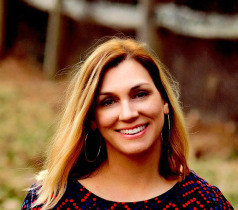 Amy Impellizzeri is a reformed corporate litigator, former start-up executive, and award-winning author. Amy’s first novel, Lemongrass Hope (Wyatt-MacKenzie 2014) , was a 2014 INDIEFAB Book of the Year Bronze Winner (Romance) and a National Indie Excellence Awards Finalist. A favorite with bloggers and book clubs, Lemongrass Hope was named the #1 reviewed book in 2014 by blogger, The Literary Connoisseur, and topped several bloggers’ “Best of” Lists in 2015.
Amy Impellizzeri is a reformed corporate litigator, former start-up executive, and award-winning author. Amy’s first novel, Lemongrass Hope (Wyatt-MacKenzie 2014) , was a 2014 INDIEFAB Book of the Year Bronze Winner (Romance) and a National Indie Excellence Awards Finalist. A favorite with bloggers and book clubs, Lemongrass Hope was named the #1 reviewed book in 2014 by blogger, The Literary Connoisseur, and topped several bloggers’ “Best of” Lists in 2015.
Amy is also the author of the non-fiction book, Lawyer Interrupted (ABA Publishing 2015), and numerous essays and articles that have appeared in online and print journals including: The Huffington Post, ABA Law Practice Today, The Glass Hammer, Divine Caroline, Skirt! Magazine, and more.
Amy is a Tall Poppy Writer and President of the Women’s Fiction Writers Association. She lives in Pennsylvania with her husband, three kids, and one energetic weimaraner, where she is currently hard at work on her next novel, Secrets of Worry Dolls.








Women's Fiction Writers
- Amy Sue Nathan's profile
- 543 followers




